
To understand the risk of mycotoxins in raw materials and feedstuffs.
How to collect a feed sample to collect a feed for mycotoxin analysis?
The most critical point to have an accurate analysis of the feed or raw material (RM) is to collect a representative sample from it. In fact mycotoxins are not homogenously present in feedingstuffs. As a consequence, the sample must be an accumulation of several sub-samples taken from different sites of the silo, truck, storage or feeders. It’s very important to follow the below procedure in order to obtain the most accurate results.
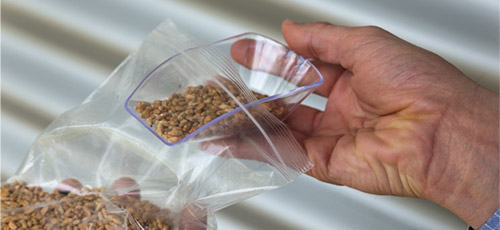
On farm
Olmix recommends to sample the complete final feed or TMR in order to have a complete view of the contamination. Specific raw material can also be sampled in order to identify the contaminated materials in the diet.
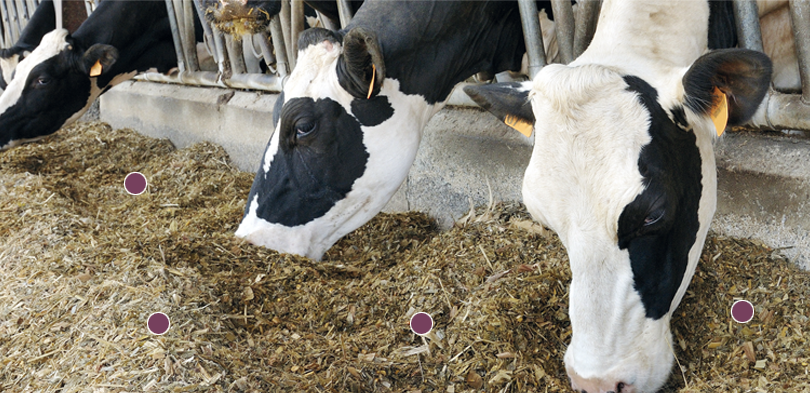
TMR
- Collect 20 handfuls all along the feeding table (cf picture).
- Renew this operation during 3 days or once a week during 4 weeks.
- Between each collection, samples must be stored in a fridge in order to avoid warming up.
- Gather all samples together in a bucket or a wheelbarrow. Mix all samples and collect 1kg to be sent to the lab.
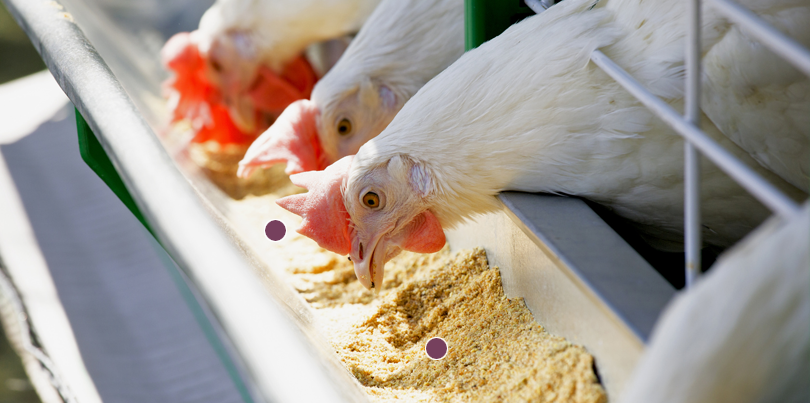
Complete Feed
- Collect 20 handfuls all along the feeders.
- Renew this operation during 3 days or once a week during 4 weeks.
- Between each collection, samples must be stored in a fridge in order to avoid warming up.
- Gather all samples together in a bucket or a wheelbarrow. Mix all samples and collect 1kg to be sent to the lab.
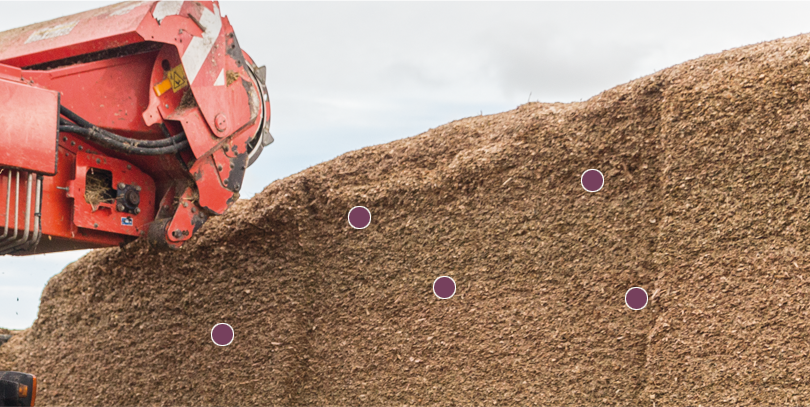
Silages
- Collect 20 handfuls all along the silo front (cf picture).
- Renew this operation during 3 days or once a week during 4 weeks.
- Between each collection, samples must be stored in a fridge in order to avoid warming up.
- Gather all samples together in a bucket or a wheelbarrow. Mix all samples and collect 1kg to be sent to the lab.
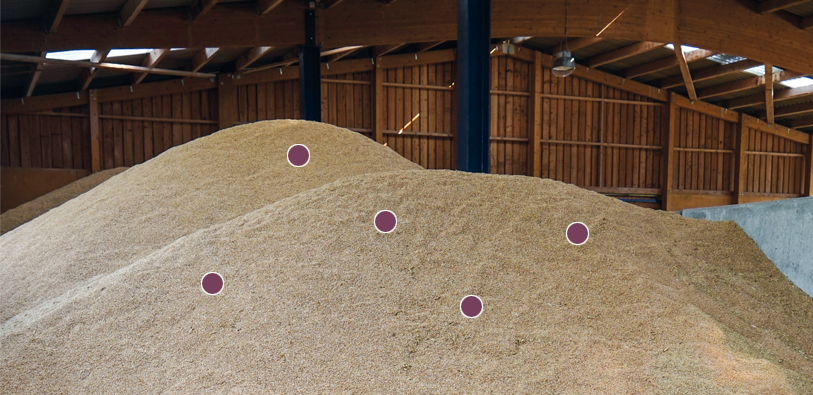
Cereals or cereal by-products
- If possible, collect 20 samples of the raw material in different places of the storage. In case of tower silo, collect samples during at least 3 days in a row.
- Between samplings, preserve samples in a fridge in case of humid raw materials. We advise to renew the analysis a few weeks later (2 or 3) in order to confirm the first result because of limited representativity of sampling.
On feed mill

Raw material :
Collect 20 sub-samples of the batch during all duration of the transfer, at regular intervals.

Complete feed :
Collect 20 sub-samples of the finished feed at regular intervals once it is cool or during truck loading.
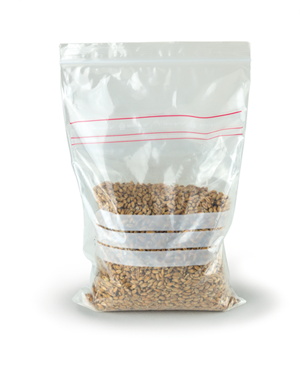
Samples packing
The final sample must be packed in a plastic bag (eg: freezing bag), and packed again in a second plastic bag to warranty good quality sealing. Reduce the air content as much as possible. The final sample must be indentified as follow: name of farm/feedmill + name os raw material/complete feed + date of sampling. Samples can be frozen. We recommend to freeze humid samples before sending them to the lab; it helps to avoid warming up during transportation.





